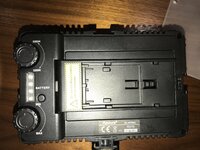Nigel95
Member
Hey hey, I would like to buy some studio lighting or external flash second hand to improve my aquarium pictures.
I have very small space beside the aquariums so I don't know if studio lighting will fit with the tripod. Any solutions for this?
My main question is what would be better for taking full aquarium shots. An external flash or studio lighting above the tank?
For what specifications should I look for? When buying an external flash or studio lighting.I have read 200 watts like two would be nice on both sides. What about external flash whats important?
Thanks
I have very small space beside the aquariums so I don't know if studio lighting will fit with the tripod. Any solutions for this?
My main question is what would be better for taking full aquarium shots. An external flash or studio lighting above the tank?
For what specifications should I look for? When buying an external flash or studio lighting.I have read 200 watts like two would be nice on both sides. What about external flash whats important?
Thanks



